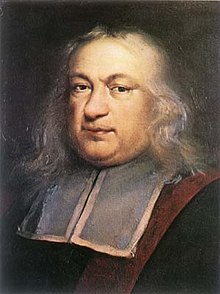Pierre de Fermat
French mathematician and lawyer / From Wikipedia, the free encyclopedia
Dear Wikiwand AI, let's keep it short by simply answering these key questions:
Can you list the top facts and stats about Pierre de Fermat?
Summarize this article for a 10 year old
Pierre de Fermat (French: [pjɛʁ də fɛʁma]; between 31 October and 6 December 1607[lower-alpha 1] – 12 January 1665) was a French mathematician who is given credit for early developments that led to infinitesimal calculus, including his technique of adequality. In particular, he is recognized for his discovery of an original method of finding the greatest and the smallest ordinates of curved lines, which is analogous to that of differential calculus, then unknown, and his research into number theory. He made notable contributions to analytic geometry, probability, and optics. He is best known for his Fermat's principle for light propagation and his Fermat's Last Theorem in number theory, which he described in a note at the margin of a copy of Diophantus' Arithmetica. He was also a lawyer[3] at the Parlement of Toulouse, France.
Pierre de Fermat | |
|---|---|
 Pierre de Fermat, 17th century painting by unknown author | |
| Born | c. 1607 |
| Died | (1665-01-12)12 January 1665 (aged 57) |
| Education | University of Orléans (BCL, 1626) |
| Known for | Contributions to number theory, analytic geometry, probability theory Folium of Descartes Fermat's principle Fermat's little theorem Fermat's Last Theorem Adequality Fermat's "difference quotient" method[1] (See full list) |
| Scientific career | |
| Fields | Mathematics and law |